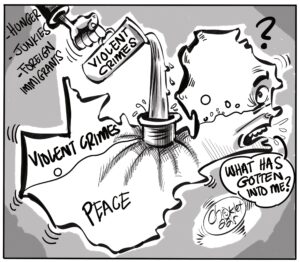The United Nations Fund for Population Activities (UNFPA) Report on the state of the world population has revealed that Africa is projected to contribute 1.3 billion more people out of the 2.2 billion that will be added to yhe world population by 2050, owing to high fertility rate.
Speaking when she delivered the Report to the Ministry of National Development Planning in Lusaka, UNFPA representative Gift Malunga stressed the need for sub-Saharan African countries to understand reproductive rights.
Africa is projected to contribute 1.3 billion people out of the 2.2 billion that will be added worldwide between 2019 and 2050, implying that Africa’s share of the world population will grow from 17 per cent in 2017 to 26 per cent by 2050, according to the Report.
“Although the fertility transition is under way in sub-Saharan Africa, it is progressing more slowly than in other regions. Fertility has dropped slightly throughout the region during the past 50 years, and significantly so in some parts of the continent, but since then has stalled in a number of countries. The transition is so slow and unpredictable that the United Nations since 2002 has had to repeatedly revise upward its population projections for most countries in the region. Because of continued high fertility, sub-Saharan Africa is expected to contribute more than half of the anticipated growth in world population from now until 2050—that is, 1.3 billion people out of the 2.2 billion that will be added worldwide. If these predictions are correct, Africa’s share of the world population will grow from 17 per cent in 2017 to 26 per cent in 2050,” the Report reads.
The report showed that there was persistent high fertility in Africa, which resulted in an increased number of young people.
“Persistently high fertility means that the increase in the number of younger people in the years ahead will make it harder for countries to ensure access to quality education and health care, and for economies to generate sufficient opportunities to productively engage the many young people entering the labour market. The extent to which individuals and couples are able to exercise their reproductive rights can determine whether fertility in the region remains high or decreases in the coming years. How governments support these rights will, therefore, have implications for countries’ social and economic development. The demand for children is higher on average in sub-Saharan Africa than in any other region. The mean ideal number of children for women aged 15–49 varies greatly between countries and between social strata in countries,” read the report.
“It ranges from 3.6 in Rwanda to 9.5 in Niger. Women’s mean desired number of children is below four only in Kenya (3.9), Malawi (3.9) and Rwanda (3.6). Married men typically prefer more children than married women. The exception is Rwanda, where women prefer an average of 3.6 children, compared with men, who prefer 3.1. In Burundi, men and women prefer the same number, 4.3. The number of children that married men prefer is highest in Chad, at 13.2. The desire for larger families in the region is also evident among women who already have four children. In all but five east African countries, less than half of these women report not wanting any more children. The share of women who prefer not to have more than four children is larger in urban areas, except in Rwanda. The norms and practices that drove high fertility in the past century are still common today in most rural areas.”
The report attributed the persistent increase in population to the level of dependence on the household economy and the reproductive norms that accompany this dependence.























